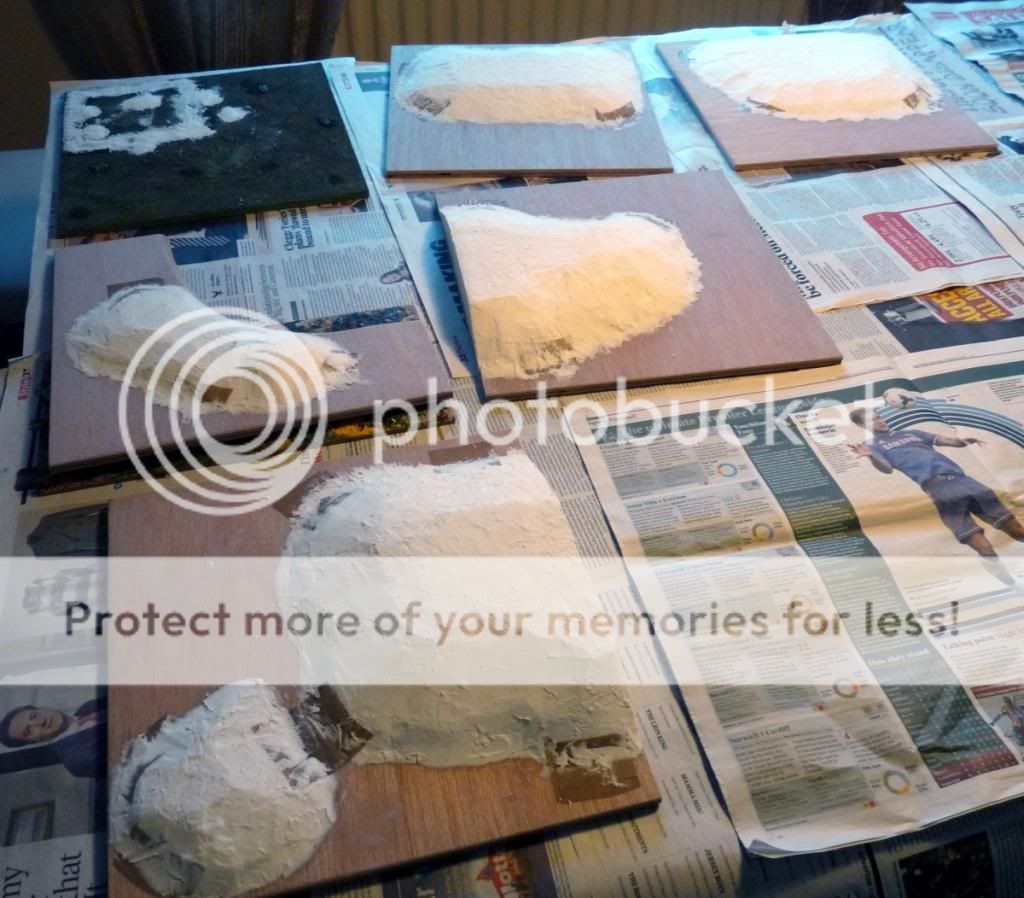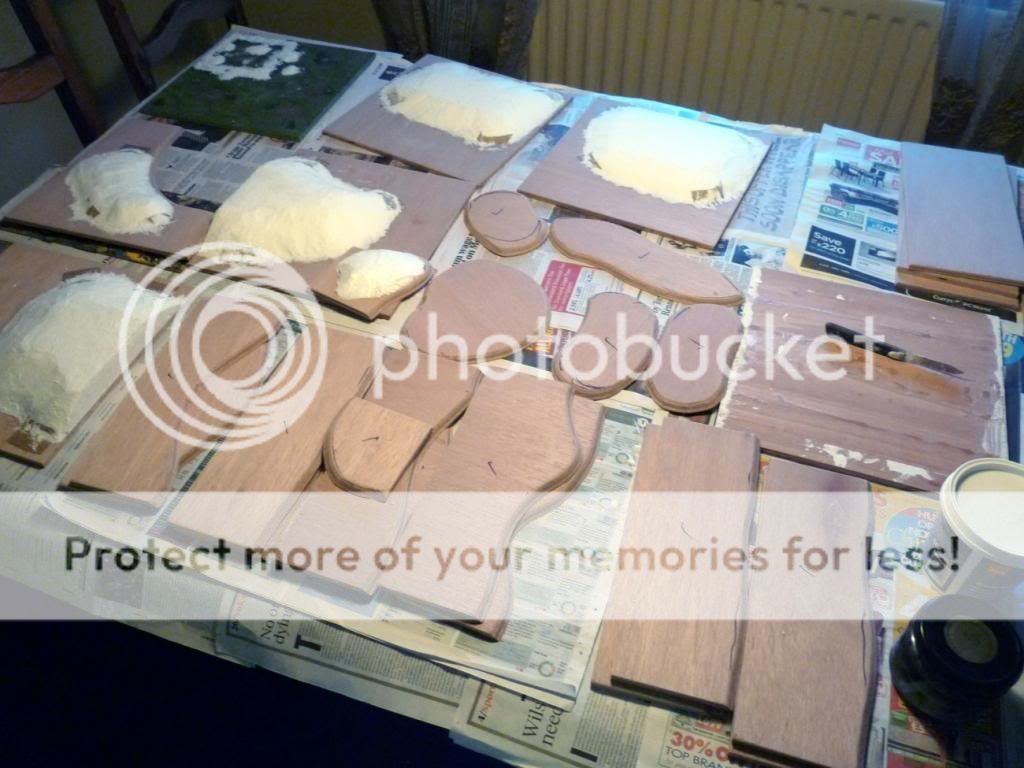Finally some colour!
All the boards have now been given a coat of green to bring them to life a bit. The colour is a specific Dulux mixed shade (‘Jungle’) found after a lot of trial and error, which I’ve used for probably 20 years on all terrain, scenery and figure bases. I suppose it’s a brybrush or overbrush technique, I’m not sure which, but it allows a hint of the black beneath to show through to add some depth and texture. I’ve brushed green over the edges of the brown patches too to blend them together as I don’t want them to look like bunkers on a golf course later. The board edges are painted too.
Next step was to dry brush the brown areas with my highlight colour, Vallejo’s Iraqi Sand. This not only lightens, but also softens the underlying brown, which is otherwise pretty dark.
After that the patches of vegetation were recovered, having been mostly lost in the ‘green’ phase. I use Vallejo’s Luftwaffe Green for this, although on this occasion I actually tried their new Heavy Green basecoat colour which appears to be an identical shade, just with presumably slightly better covering power. These will be drybrushed again later.
The next step was the real key to tying everything together – the yellow drybrush. Trying to keep it light and even is always a challenge when you’re also trying to do it reasonably quickly, but it worked out OK I think. Then the dark green patches were re-highlighted with the main green, to soften them a bit while still keeping them distinct. Lastly the rocks were given a coat of dark grey and then dry-brushed with a light grey.
Which meant… everything was finally finished! A fair amount of work over the last couple of weeks, and further back into last Autumn when the river banks were cut, but I’m very pleased with the results and it was well worth it. These boards can now be added to the ones I already have (making just over 40 square feet in total) and hopefully be used in a game before too long. I’ll post some pics of them in situ with the water base boards before putting them away.















































